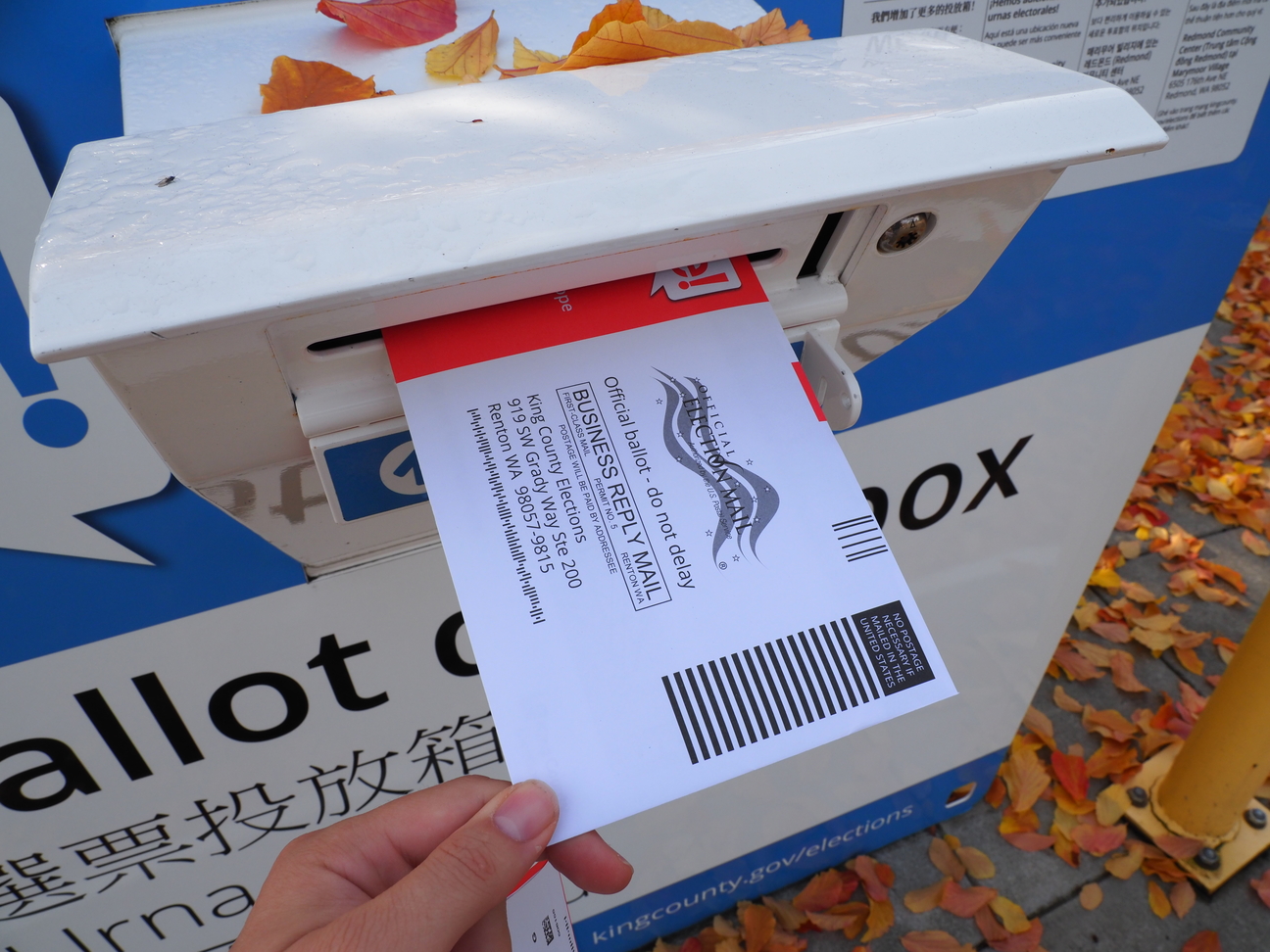Voter turnout in Washington (PDF) is easily outpacing the last midterm cycle four years ago and might even approach historic levels, if the most recent ballot return rates are any indication. As of this evening, 44.9% of Washingtonians registered to vote had returned their ballots. This morning, the number was 40% — so, in the span of just eight hours, it went up by four percent. That’s big. On Election Night four years ago, only 31.32% of ballots across Washington State had been returned.
Washington’s turnout has rebounded to such a big degree this year that the Evergreen State has eclipsed Oregon, the pioneer of voting-at-home and a state that elects its governor in midterm cycles. Only 39.8% of ballots had been returned across the Beaver State (PDF) is as of today’s update, whereas Washington is now in the mid-forties and likely to top 50% by tomorrow night.
Four years ago, Oregon had hit 49.9% the day before the election.
As of today, Multnomah County — easily Oregon’s largest population center and a key source of votes for Democratic candidates and progressive causes — is now ahead of the state average, with 40.1% of ballots returned.
The story is similar up in Washington, where King County is slightly ahead of the state as a whole at 46%. That wasn’t the case four years ago.
For years, Washington has grappled with declining turnout across all types of elections. The 2016 presidential election, which Secretary of State Kim Wyman confidently predicted would be a record breaker, saw less turnout than 2012 or 2008. Turnout in the 2014 midterms came nowhere close to 2010 levels, and turnout in the in-between local years got so bad that Washington set two records for the worst turnout in state history in the span of just three years.
After last year’s embarrassingly awful turnout, the Legislature finally got to work removing barriers to voting, passing the Access to Democracy package, which includes automatic voter registration, preregistration for sixteen and seventeen year olds, same-day registration, and the Voting Rights Act.
King County then decided to raise the bar even further and implement prepaid postage this year, prompting Wyman and Governor Jay Inslee to pool discretionary funds from their office budgets to ensure the other counties could do likewise.
Thanks in part to prepaid postage for ballot return envelopes, turnout in the August Top Two election went up for the first time in years instead of down. Prepaid postage is now helping drive turnout in this general election.
We are relieved that action has finally been taken to arrest and reverse our declining voter turnout trend. But while this positive momentum is welcome, we cannot take it for granted. Next year is a local election year without a U.S. Senate race or any U.S. House races on the ballot, so it will take more work to catalyze voter turnout.
Turnout is not merely a function of what is on the ballot, as Secretary of State Kim Wyman has often incorrectly stated. Rather, it is one factor that influences turnout. There are other factors, one of which is barriers to voting. Washington has done a good job this year of tearing down a lot of those barriers. But we could do more.
Washington lawmakers can also make voters’ lives simpler and reduce voter fatigue by changing state law to streamline the elections we hold.
Instead of having four election windows in a given year (February, April, August, November), we should go to two (May or June and November). And to simplify what’s on the ballot, we should end the practice of considering state-level initiatives and referenda in odd-numbered years, since those are local election years.
These moves would also save money — particularly for small cash-strapped counties in Eastern Washington — in addition to reducing voter fatigue.
Speaking of counties in Eastern Washington, Spokane deserves a huge kudos for being the first major county in the state to surpass 50% turnout. The big milestone happened this morning. Spokane County hasn’t looked back: the county is now up to 52.7%, which is truly impressive. Clark is also doing fairly well, with 47.0% in.
Democratic hopes of capturing WA-03 and WA-05 are dependent on robust turnout in populous Clark and Spokane counties, so these high return rates could bode well for Democratic challengers Carolyn Long and Lisa Brown.
The state’s other large counties have some catching up to do. Snohomish only just reached 40.3%, and Pierce is even further behind at 36.6%. Thurston is barely ahead of Pierce with 36.8%. As mentioned, King is ahead of the curve with 46% turnout, and will likely pass 50% when it makes its first report tomorrow.
Only one county in Oregon has seen a majority of its voters turn out yet, and that’s Grant (50.2%). Curry, Wallowa, and Deschutes are close behind, with both at or over 48%. All of those counties are fairly small — Grant only has 5,325 voters.
The state’s second largest county, Lane (home to Eugene), is seeing about the same turnout as Multnomah so far… 40%. Other big counties are further behind: Marion County stands at 36.3% and Washington County is at 36.5%.
Meanwhile, Clackamas County — the third of the major counties in the Portland metro area besides Multnomah and Washington — has reached 41.6% turnout and is thus the current turnout leader among the populous counties in Oregon.
Unlike Washington, Oregon has party registration, so elections officials down there also break out their turnout statistics by party. 49.3% of eligible Democratic voters have returned ballots so far, and 49% of Republican voters have done likewise. 40.1% of independent voters, meanwhile, have returned ballots.
Turnout among nonaffiliated Oregon voters is a measly 22.1%, while turnout for minor party voters ranges from 22.5% (Working Families) to 38.7% (Pacific Green), with the Libertarians and others in between.

